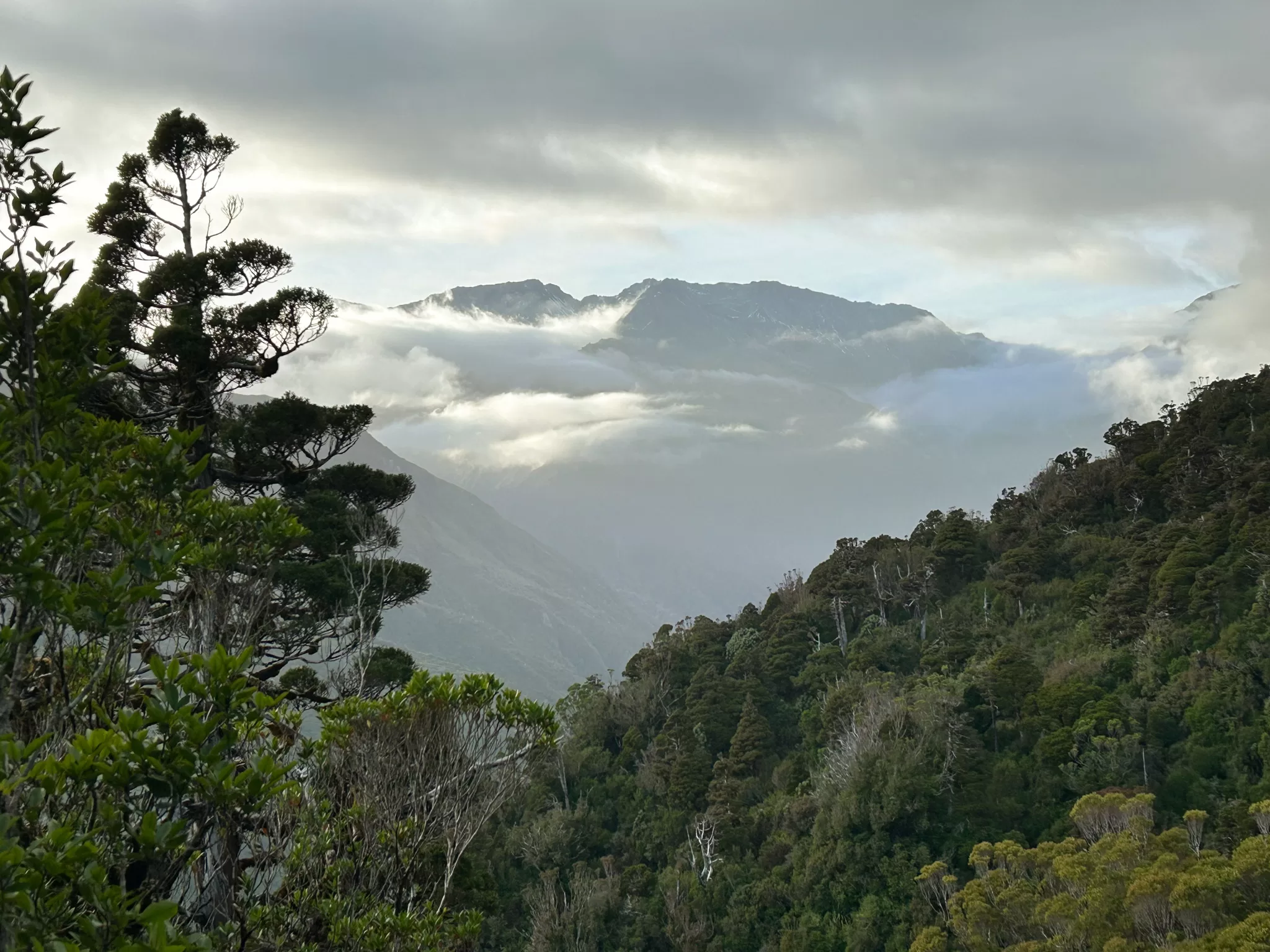Using your PLB when the ‘patient’ says not to
Submitted by Verity Jackson @nzhikingadventures
July, 2017
Our plan was to spend two nights at Boo Boo Hut on the West Coast, with a day trip to Pinnacle Biv. I was in my 30s at the time, but my three tramping friends (Lew, Dan & Ron) were all 60+. We stopped at the Sheffield Bakery on the drive in and joked with the shop assistant that the pensioners were on a trip with their old persons’ carer (me). We said to not worry if we stopped in again on the way back and someone was missing.
Ah, hindsight.
We started off on the track and walked together for the majority of the way, until Lew and Ron started lagging behind. Ron wasn’t feeling well but thought it was because he’d only just returned home from an overseas trip, and perhaps had the start of a cold. Dan and I pressed on to the hut and arrived about 5.30pm, just on dusk.
Dan was concerned about Ron, so he (as the more experienced tramper) headed back down the track, while I stayed in the hut to light the fire and boil some water for warm drinks. He caught up with Lew and Ron, and took Ron’s pack. Ron was in a lot of pain, at times rolling around on the ground, but they managed to make it to the hut.
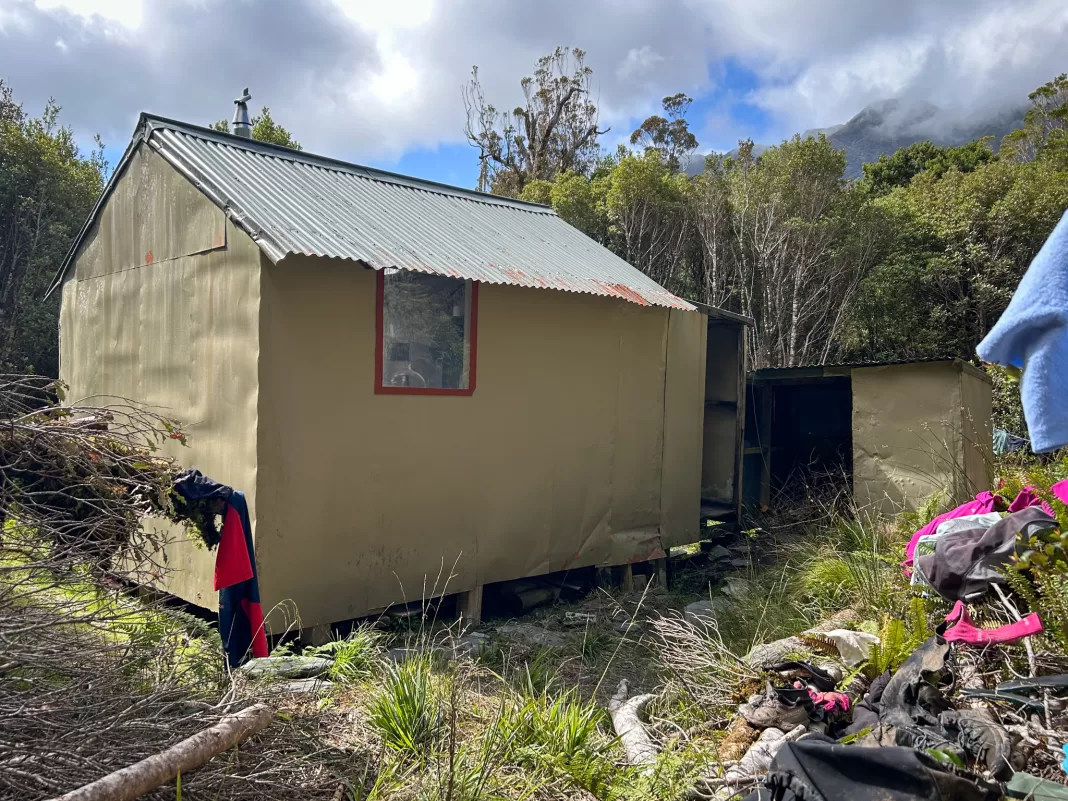
We didn’t know what exactly was wrong with Ron. He had no history or family history of heart problems. His pain was middle of chest and upper back. It sounded like he was describing heart burn. We gave him quickeeze, but it had minimal effect.
Using the PLB
We talked about setting off a PLB, but both Ron and Lew were SAR members, and Ron was adamant he didn’t want to use a beacon. He didn’t think it was serious and said he’d never live it down if he got extracted for some bad digestion.
Eventually while Ron visited the long drop (thinking that would solve his problems) the rest of us decided to set off one of our PLBs while he couldn’t talk us out of it. Ron’s level of pain and the fact that it was in his chest were just too concerning for us. I pushed the button on my PLB and put it on top of the woodshed roof with a clear view of the sky. Thankfully, Ron wasn’t too upset when we told him our decision. We all went to bed to wait.
The Rescue
About an hour and a half later we heard the helicopter. It came closer, hovered above the hut and winched down three SAR members. There was a heli pad close to the hut, but the helicopter was too big and couldn’t land. The paramedic on board wasn’t winch trained, so could only do the medical assessment from the hovering helicopter via radio. Eventually they decided to extract Ron, so he and the three SAR were winched up and flown off.
That was it for the night. I don’t think we realised at that stage just how serious the situation had been. We ate the steak and drank the Canterbury Cream that Ron had left behind. The next day we walked up to Pinnacle Biv as planned, knowing there was cell reception on the ridge. Once above the bush-line, I called my husband and Ron’s wife to get an update.

Ron had experienced a massive heart attack, called a widowmaker heart attack (STEMI) where the largest artery in the heart is blocked. If we hadn’t set off the beacon when we did, the outcome would have been very different. Ron was flown to Christchurch Hospital for treatment and was discharged home after a few days. He was off SAR for months and wasn’t able to do any hard work when he returned. He had to be flown in to key locations or working from base.
Knowing that I literally saved a friend’s life is a heavy weight to carry. It’s a hard set of emotions to describe; a bundle of relief, appreciation, guilt and anxiety.
Two years ago Ron & Dan flew back to Boo Boo Hut and walked out. And last month it was time for me to return to Boo Boo Hut. The trip brought back the experience to me seven years later, but I’m thankful to report that both of these trips (this time) were boo-boo free!
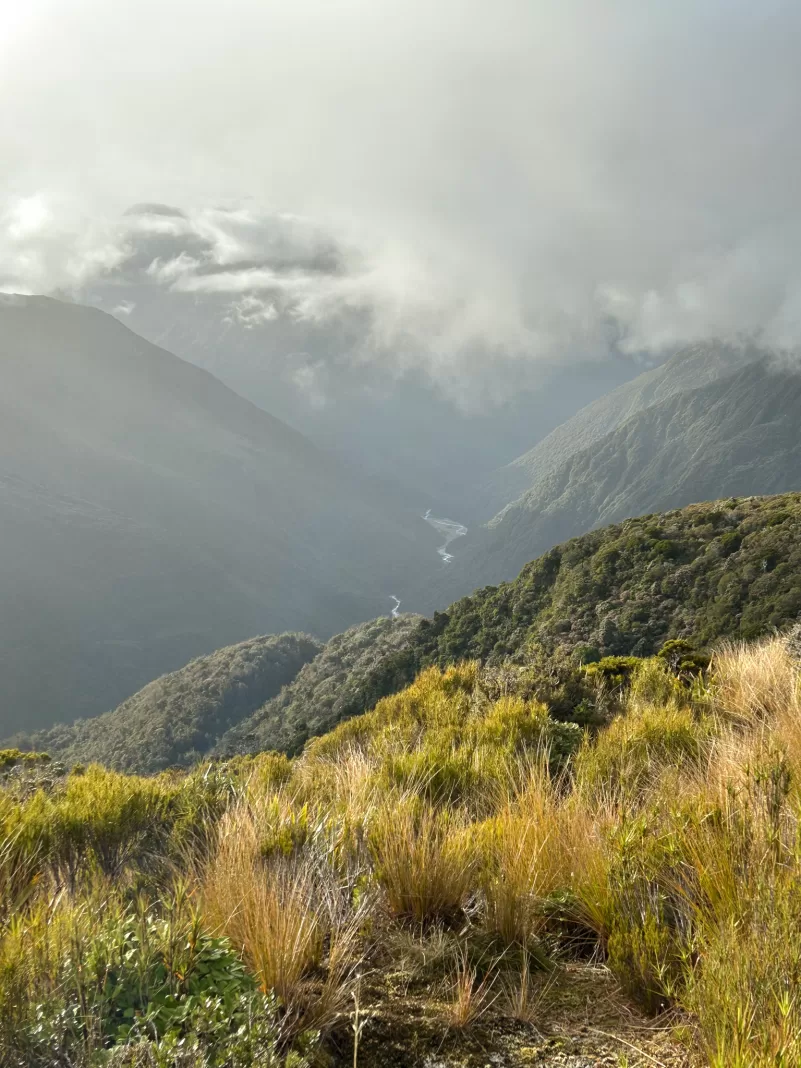

What did you do right?
- We were seasoned trampers and picked a trip within our level of experience.
- I’d left my trip intentions with my husband. He knew the names of who I was with and which huts we planned on visiting.
- We had three PLBs in our group of four people.
- We activated the PLB when we had serious concerns for someone’s welfare.
What would you do differently?
- I now leave more detailed trip intentions and include emergency contacts of other trip members. All I’d left with my husband for this trip were the full names of everyone in the group and “Boo Boo Hut, Pinnacle Biv”. He knew who I was with, but he didn’t know who to contact on their behalf when the PLB had been activated.
- I would now activate the PLB immediately for anything to do with chest pain rather than waiting; it could easily be a serious heart attack.
- If the group becomes separated, I would wait for the others to catch up before I got too far ahead rather than pushing on to the destination.
- Make sure your PLB battery isn’t expired and that your emergency contacts are dependable and contactable. Out of the three PLBs in my group, only mine could reliably be used in an emergency.
- My husband almost didn’t pick up the call from RCCNZ because it was from an unknown number.
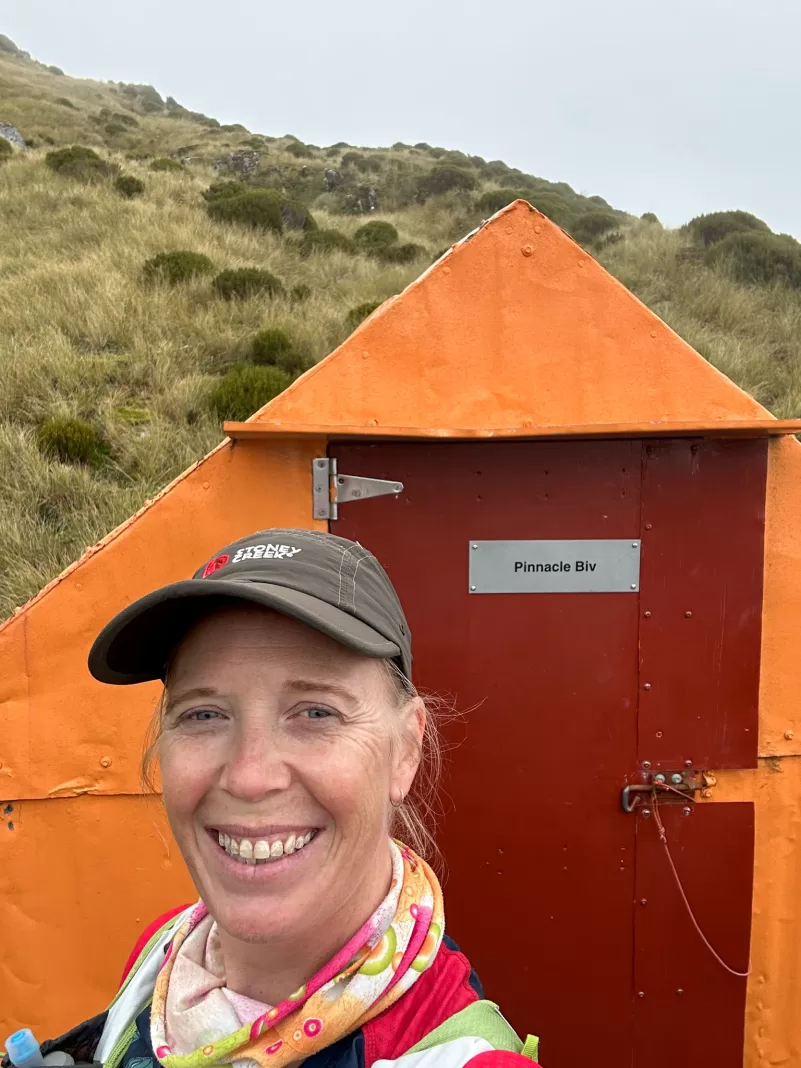
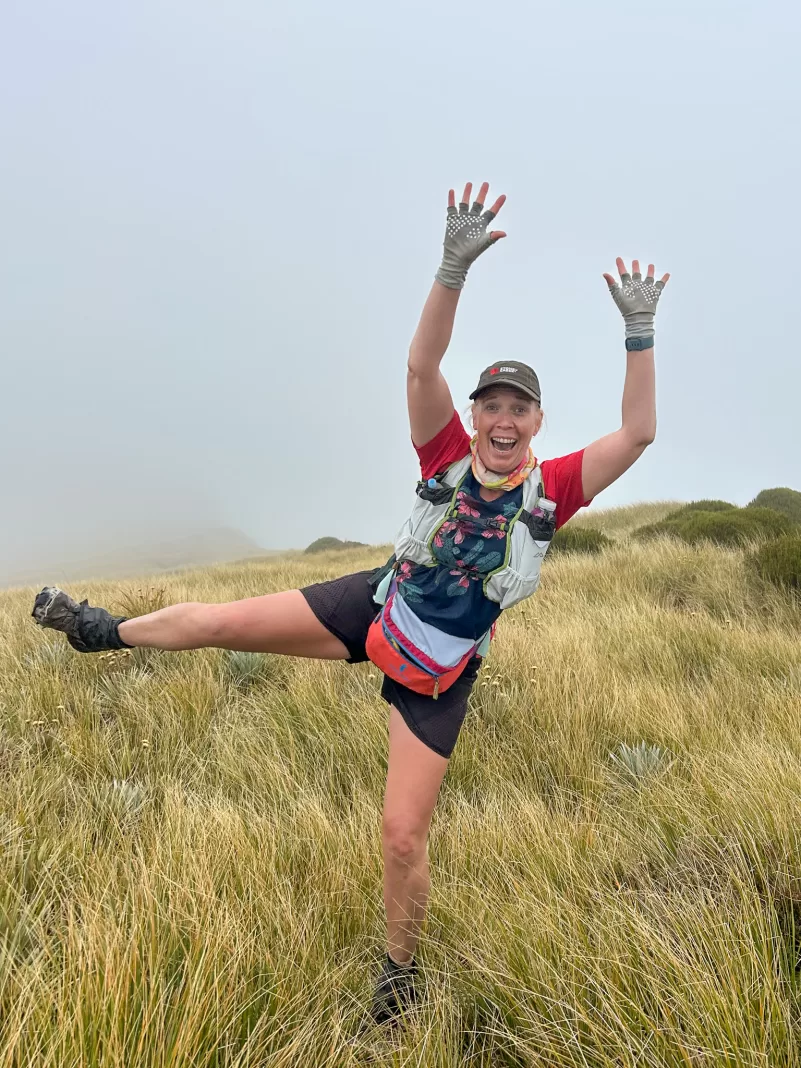
NOT using your PLB because the ‘patient’ says no
Submitted by a family member, I’m choosing to leave everyone anonymous for their privacy
In parallel to Verity’s story, is an experience from one of my family members. This person was out walking the hills with a friend, when the friend started experiencing intermittent, but very severe, chest pain. The friend refused to call for help or use the PLB, saying it was just indigestion. So my family member did not use their PLB at their friend’s insistence, and instead walked their friend back out to the car (thankfully they weren’t in the middle of a multi-day tramp).
However later that same day, their friend collapsed to the ground, dead. Luckily they were in a community area surrounded by people and with access to an AED, which was used to revive them. They survived the widow-maker heart attack, the same one that Ron had experienced (after also ignoring the warning signs).
Please don’t ignore the warning signs of a heart attack. Call for help if you suspect someone might be experiencing a heart attack, every minute matters.
Thanks for reading this first rescue story (hopefully of many!). If you have a rescue story of your own that you’d like to share, then please get in contact either via Instagram or my email. Or if you have any feedback then please comment below or reach out!
What do you need to read next:

Heuristic Traps in Tramping
Heuristic traps cause fatalities in the backcountry every year. Read on for an explanation of what the six most common heuristic traps in the outdoors, and how to avoid them.
